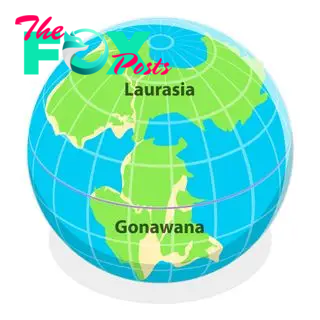Science
Boiling rocks from Earth's crust tore an ocean into Mongolia 410 million years ago
Over 400 million years ago, an upwelling of hot rock from Earth's mantle wrenched apart the crust in Mongolia, creating an ocean that survived for 115 million years.
The geological History of this ocean could help researchers understand Wilson cycles, or the process by which supercontinents break apart and come together. These are slow, broad-scale processes that progress by less than an inch per year, said study co-author Daniel Pastor-Galán, a geoscientist at the National Spanish Research Council in Madrid.
"It's telling us about processes in the earth that are not very easy to understand and that are also not very easy to see," Pastor-Galán told Live Science.
Geoscientists can fairly accurately reconstruct the breakup of the last supercontinent, Pangea, 250 million years ago. But prior to that, it's difficult to model exactly how the mantle and the crust interacted.
In a new study, researchers were intrigued by volcanic rocks in northwestern Mongolia from the Devonian period (419 million to 359 million years ago).
The Devonian was the "Age of the Fishes," when fish dominated the oceans and plants began to spread on land. At the time, there were two major continents, Laurentia and Gondwana, as well as a long stretch of microcontinents that would eventually become what is now Asia. These microcontinents gradually bumped up against each other and merged in a process called accretion.

The researchers began doing fieldwork in northwest Mongolia where rocks from these continent-building collisions are exposed on the surface, in 2019, studying the ages and chemistry of the ancient rock layers. They found that between about 410 million and 415 million years ago, an ocean called the Mongol-Okhotsk Ocean opened up in the region. The chemistry of the volcanic rocks that accompanied this rift revealed the presence of a mantle plume — a stream of particularly hot, buoyant mantle rock.
-

 Science1d ago
Science1d agoInside Capitol Hill’s Latest UFO Hearings
-

 Science1d ago
Science1d agoYou Won’t Want to Miss the Leonid Meteor Shower. Here’s How and When You Can See It
-

 Science2d ago
Science2d agoHere’s What Trump’s Win Means for NASA
-

 Science6d ago
Science6d agoWhy Risky Wildfire Zones Have Been Increasing Around the World
-

 Science6d ago
Science6d agoIt’s Time to Redefine What a Megafire Is in the Climate Change Era
-

 Science1w ago
Science1w ago4 Astronauts Return to Earth After Being Delayed by Boeing’s Capsule Trouble and Hurricane Milton
-

 Science1w ago
Science1w agoThe Elegance and Awkwardness of NASA’s New Moon Suit, Designed by Axiom and Prada
-

 Science1w ago
Science1w agoSpaceX Launches Its Mega Starship Rocket. This Time, Mechanical Arms Catch It at Landing



























